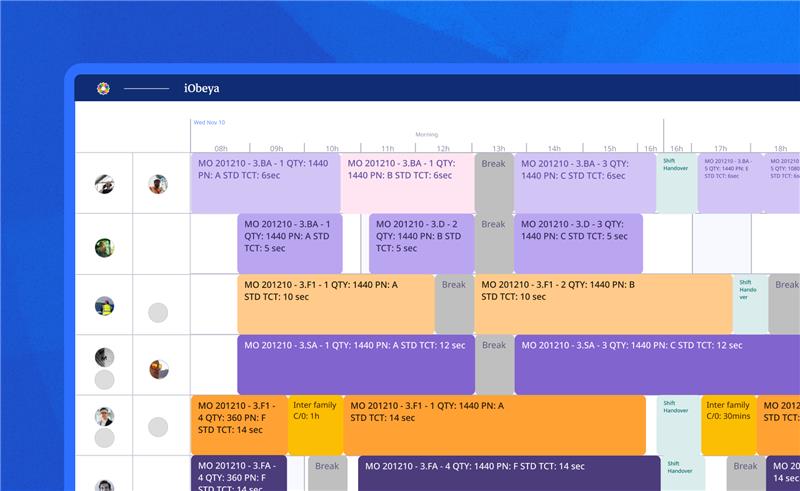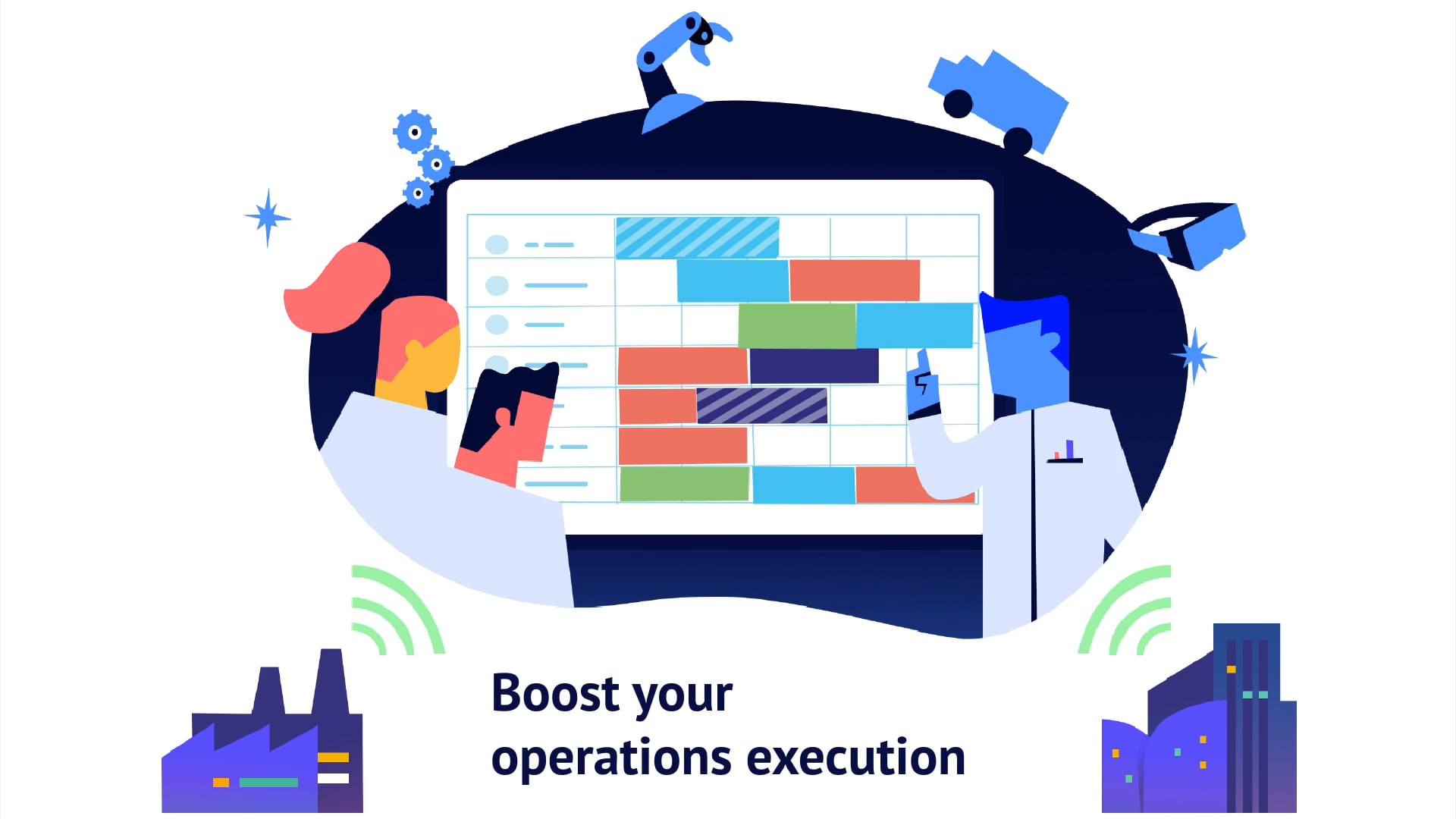Daily Capacity Management (DCM) is the practice of managing and optimizing the use of a company’s operational resources on a daily basis. The goal is to ensure that production and processes are running at full capacity, minimizing inefficiencies and interruptions. DCM has its roots in Lean management methods, which are particularly developed in the Japanese manufacturing industry. It is inspired by the Toyota Production System’s practices, which emphasize continuous improvement, reduced waste and smooth operations.
What is the difference with scheduling?
Daily Capacity Management (DCM) and scheduling are closely related, as both aim to optimize the use of available resources. While scheduling focuses on the detailed planning of the tasks to be accomplished, DCM ensures continuous and responsive management of operational capacity, adjusting resources and priorities according to actual day-to-day production conditions.
In a world where companies must quickly adapt to fluctuations in demand and the increasing complexity of production lines, managing daily capacity has become a critical lever for efficient and profitable operations. With modern, digital tools like those offered by iObeya, companies can automate and visualize their processes more seamlessly, bringing significant efficiency gains.
3 advantages of DCM for optimal operational efficiency
1. Solving problems of inefficient operational management
Poor capacity management can lead to a multitude of problems, including production bottlenecks, misallocation of resources, and delays in the delivery of products or services. Daily capacity management solutions, such as those offered by iObeya, make it possible to identify these problems in real time, in a visual and collaborative way.
With iObeya’s DCM solution, you can monitor production flows in real time, identify malfunctions, and take immediate action to restore balance. Your organization can not only improve its responsiveness to incidents, but also prevent them from occurring by anticipating capacity needs, whether it’s labor or machinery.
Let’s take the example of a pharmaceutical company that monitors production data in real-time with DCM and detects that batch changes are consistently taking longer than expected. They realize that the batch change process requires thorough cleaning of the machines to avoid cross-contamination, but the cleaning teams are not informed in time of the batch changes. The company will thus be able to undertake to improve communication between departments. This is an essential point that we will see in more detail in part 3.

2. Reduce high operational costs due to machine downtime
Unplanned machine slowdowns or shutdowns can have a devastating impact on operational costs. Indeed, every minute of inactivity represents a loss of productivity and revenue. One of the most effective solutions to minimize these interruptions is to set up daily monitoring of machine capacity.
DCM tools, such as those provided by iObeya, make it possible to centralize all data related to machine status and preventive maintenance schedules, facilitating real-time decision-making. By regularly analyzing machine performance, companies can anticipate breakdowns and proactively schedule maintenance, reducing unplanned downtime.
For example, if an industrial component manufacturer is dealing with a machine slowdown, technicians quickly access performance data to identify possible causes (part wear, software issues, or overheating). Depending on the diagnosis, they take immediate corrective action, such as machine recalibration, maintenance intervention, or temporary reallocation of production.
3. Reduce miscommunication and delays in decision-making between departments
Ineffective communication between departments can significantly slow down decision-making processes, leading to delays in production or delayed responses to changes in demand. Daily capacity management, coupled with visual collaboration platforms like iObeya, helps break down organizational silos by making it easy to share critical information instantly.
By using visual dashboards (e.g., QCD) that are accessible to all departments, teams can align their goals, coordinate their actions in real-time, and better analyze KPIs. This improves the company’s responsiveness to daily challenges, while ensuring greater transparency in priority management.
Sanofi’s testimonial about the use of iObeya:
“The biggest benefits are time efficiencies, collaboration, and sharing information. Often a lot of information has to be shared, and it is complicated. iObeya really helps in being able to show such information and if there is a large volume of information to share.” Global head of digital and IS/IT for industrial affairs and corporate functions, Sanofi HQ (source: TEI study)
Daily capacity management, supported by digital tools, represents a revolution in the way companies manage their operations. By optimizing resources, reducing machine downtime costs, and streamlining communication between departments, companies can achieve a new level of operational efficiency. Let’s take the concrete example of Sanofi: The use of iObeya solutions has allowed Sanofi to” increase speed of decision-making and problem-solving by 25%, delivering benefits of €4.5 million. ” (source: TEI (Total Economic Impact) study)
To learn more about the subject:
- Discover the Masterclass on the subject where our colleague Sylvain goes into detail about the configuration and uses of DCM in iObeya
- Join our next webinar: coffee Break
- Contact Us / Request a Demo



